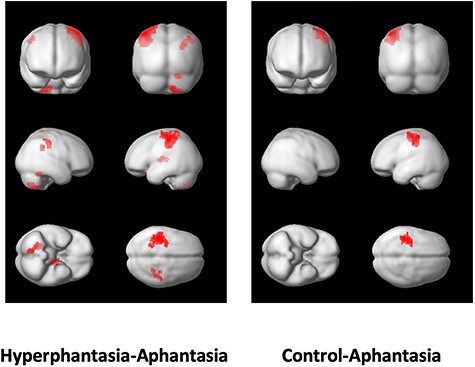Jun 10 2021
Brain Connections in Aphantasia
 There is definitely something to be said for the neurodiversity perspective – when it comes to brain function there is a wide range of what can be considered healthy. Not all differences should be looked at through the lens of pathology or dysfunction. Some brains may be more typical than others, but that does not mean objectively “normal”, better, or healthier. Like any valid concept it can be taken too far. There are conditions that can reasonably considered to be brain disorders causing objective dysfunction. But the scope of healthy variation is likely far broader than many people assume.
There is definitely something to be said for the neurodiversity perspective – when it comes to brain function there is a wide range of what can be considered healthy. Not all differences should be looked at through the lens of pathology or dysfunction. Some brains may be more typical than others, but that does not mean objectively “normal”, better, or healthier. Like any valid concept it can be taken too far. There are conditions that can reasonably considered to be brain disorders causing objective dysfunction. But the scope of healthy variation is likely far broader than many people assume.
Part of this concept is that brain organization and function includes many trade-0ffs. To some extent this is a simple matter of finite brain resources that are allocated to specific abilities, increase one and by necessity another has to diminish. Also different functions can be at cross-purposes. Extraverts may excel in social situations, but introverts are better able to focus their attention inward to accomplish certain tasks.
In light of this, how should we view the phenomenon of aphantasia, a relative inability to summon a mental image? Like most neurological functions, the ability to have an internal mental image varies along a spectrum. At one end of the extreme are those with a hyperability to recall detailed mental images. At the other are those who may completely lack this ability. Most people are lumped somewhere in the middle. The phenomenon of aphantasia was first described in the 1880s, then mostly forgotten for about a century, and now there is renewed interest partly due to our increased ability to image brain function.
A new study does just that, looking at people across that phantasia spectrum to see how their brain’s differ. Using fMRI they scanned the brains of those with aphantasia, hyperphantasia, and average ability. They found that in neurotypical subject there was a robust connection between the visual cortex (which becomes active when imagining an image) and the frontal cortex, involved in attention and decision-making. That makes sense – this connection allows us to direct our attention inwardly to our visual cortex, to activate specific stored images there. Subjects with aphantasia had a relative lack of these connections. While this is a simple model, it makes perfect sense.
The study authors also performed standard personality tests on the subjects. Those with aphantasia tended to be more introverted, while those with hyperphantasia tended to be more open. This finding will have to be replicated with fresh data to confirm it. If it holds up I don’t think there is any simple reason why it might be the case. Interactions among various brain functions, and their interaction with environmental factors, tend to be extremely complex.
Subjects had equivalent scores on standard memory tests, so aphantasia does not seem to result from or to affect non-visual memory. It does seem to be an isolated visual phenomenon. However, those with hyperphantasia were able to recall much richer and detailed visual memories, greater than those in the midrange who in turn were greater than those with aphantasia. This extended to autobiographical memory as well, the ability to recall details from one’s past experiences, which is also highly visual.
The authors also point out that people with aphantasia can be very high achieving, and it does not seem to be a general disadvantage in life. Rather, it is a different way of processing information – again reinforcing the neurodiversity rather than neurological disorder paradigm. The phenomenon is not extensively studied, and it may be discovered that those with aphantasia have advantages in other types of information processing, or simply that they simply accomplish the same goals by different methods.
This fits with general evolutionary principles and observations – there is more than one way to skin a cat. There is a tremendous amount of intraspecies variation, and individuals can find various ways to use their relative abilities to survive and flourish. This provides a lot of raw material for evolutionary forces to work with. As the environment changes, different strategies may become more or less advantageous. It’s interesting to think if, as human society changes, are different neurological strategies being favored more than others. Despite popular myth, humans are evolving. Relative gene frequencies are shifting over time. I’m not sure if we will be able to detect any demonstrable change in such a large outbred population, but over the course of hundreds and thousands of years humanity may significantly evolve neurologically.






